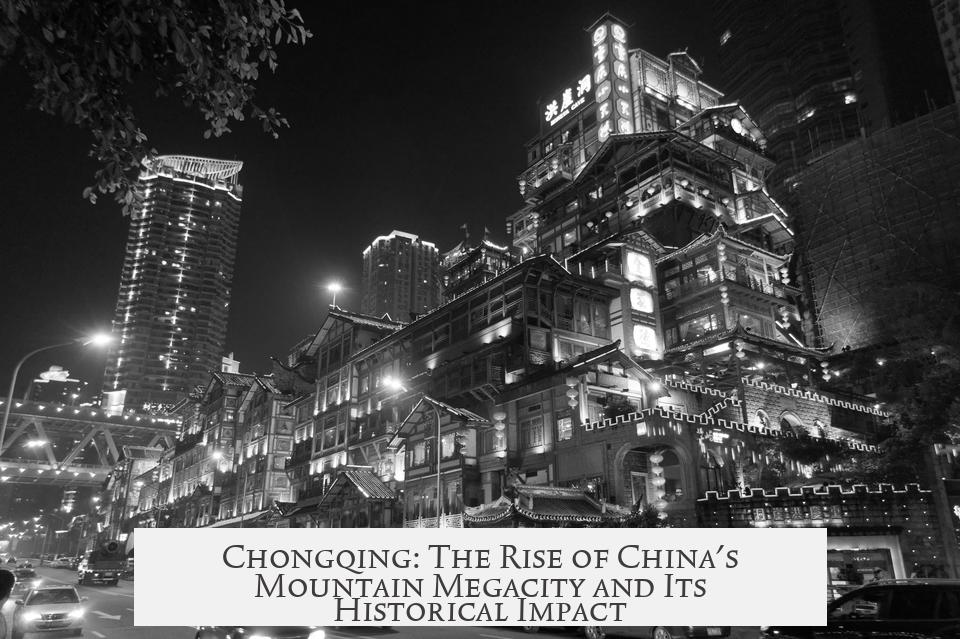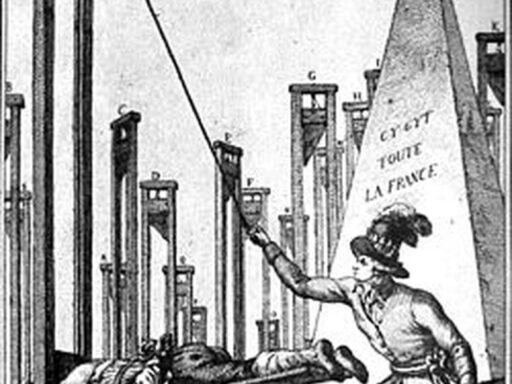Chongqing’s significance stems from its strategic location, historical developments, and rapid urban growth, making it a major center in Southwest China.
Located on the Yangtze River, Chongqing lies next to one of China’s most fertile regions. This position makes it a natural trade hub.
- It historically served the agricultural powerhouse Sichuan and the Yunnan region.
- Its port connected these areas to the rest of China, facilitating commerce.
- Proximity to Chengdu, a large manufacturing and agricultural city, created economic synergy and rivalry.
Chongqing connects to major waterways such as the Grand Canal via shipping routes to Nanjing. Railways and roads developed naturally, establishing the city as the region’s transportation nexus.
The city’s strategic value began early. In the late Song Dynasty, it was fortified to defend against Mongol invasions, which expanded its boundaries and set the stage for future growth. The name “Chongqing,” meaning “double happiness,” dates to this period when Prince Zhao Dun became Emperor Guangzong in 1184.
Chongqing’s population experienced dramatic changes, especially during the Ming-Qing transition. Widespread famine, war, and disease reduced Sichuan’s population from three million to 20,000. Migrants from Huguang, Jiangxi, and Guizhou repopulated Chongqing and Chengdu swiftly.
During the Qing Dynasty, these demographics made Chongqing a vital administrative center. It was chosen as the headquarters of the newly formed Viceroyalty of Huguang and Sichuan, above Wuchang and Chengdu.
Chongqing gained particular prominence in World War II after Nanjing fell to Japanese forces. It was chosen as China’s wartime capital due to its mountainous protection and transportation links.
- Large machinery and personnel were relocated from eastern industrial areas.
- Refugees, including government officials and skilled workers, migrated to the city.
- Chongqing’s population doubled from under 1 million in 1937 to nearly 2 million in 1945.
Post-war, Chongqing developed a strong industrial base. In 1964, following the Bay of Tonkin incident, China implemented the Third Front Plan.
- This strategy moved vulnerable heavy industries inland to protect from coastal attacks.
- Chongqing and Kunming were prioritized for industrial relocation.
- 450,000 workers and 60 large state-owned enterprises in fields like power generation, electronics, and metal refining moved to Chongqing.
This relocation fostered a solid manufacturing and economic foundation that supported sustained growth.
Between 1990 and 2015, Chongqing’s population surged from 4 million to 14 million. This boom was part of China’s broader economic expansion and urbanization.
In 1997, Chongqing gained official municipal status, separating administratively from Sichuan Province. From 2007 to 2012, the “Chongqing system” under Bo Xilai accelerated urbanization.
- Three million rural-to-urban residential permits were issued.
- Massive public housing projects attracted more people to the city’s core.
- The city’s dense skyline and rapid construction largely date from this era.
Chongqing continues as a key transportation hub, industrial center, and urban metropolis. Its roots in strategic geography, historical importance, administrative roles, wartime resilience, industrial policies, and modern urban planning explain why it matters.
| Factor | Details |
|---|---|
| Geography | Yangtze River location, access to fertile regions, connection to Grand Canal |
| Historical role | Song Dynasty fortification, wartime capital during WWII |
| Population shifts | Ming-Qing decline, migrants from neighboring provinces, Qing administrative importance |
| Industrial growth | Third Front Plan relocation of industries to Chongqing |
| Urbanization | 1990-2015 population boom, municipal status in 1997, Chongqing system reforms |
Chongqing’s strategic location and layered history define its centrality in southwestern China’s economy and governance.
- Located on the Yangtze River, facilitating trade and transport.
- Fortified and named during the Song Dynasty; strategic defensive importance.
- Population rebound after Ming-Qing collapse, becoming an administrative center.
- Served as China’s WWII wartime capital, boosting industrial and population growth.
- Expanded as a major industrial hub under the Third Front Plan.
- Experienced rapid urbanization and population growth since 1990.
Why is Chongqing? Unpacking the Unique Rise of China’s Mountain Megacity
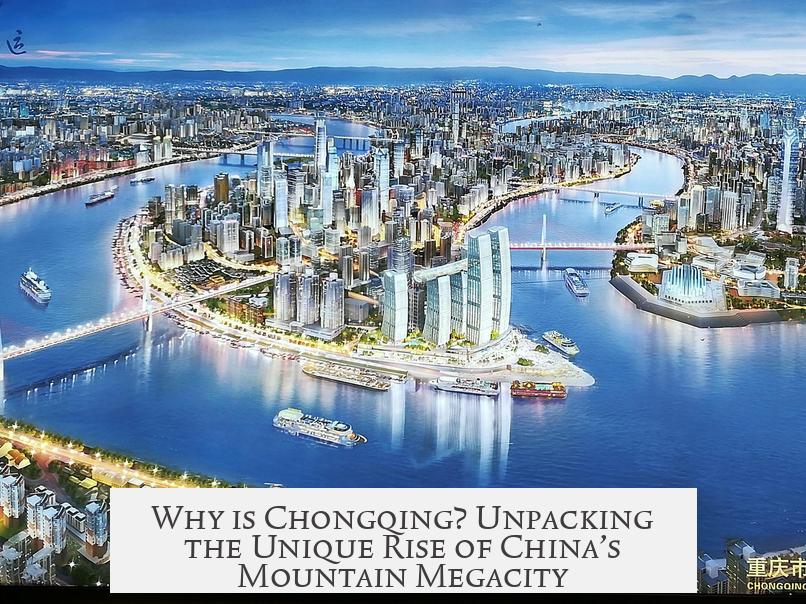
Why is Chongqing such a standout city in China? The answer is a wild mix of geography, history, resilience, and a pinch of strategic planning. If you’ve ever asked yourself, “What’s the deal with Chongqing?” you’re not alone, and this post aims to untangle the threads.
At first glance, Chongqing might just look like one of those sprawling Chinese cities — foggy, bustling, with mountains and rivers crisscrossing everywhere. But dig deeper. This city’s story is as layered as it is fascinating. Hang tight, because this ride swerves through economic booms, wartime dramas, population shifts, and infrastructure marvels.
The Strategic Heartbeat: Where Rivers Meet and Trade Thrives
First of all, location is everything, right? Chongqing sits like a crown jewel on the mighty Yangtze River, one of China’s longest and most vital rivers. This isn’t just geography for geography’s sake. Being on the Yangtze gives Chongqing natural access to fertile agricultural zones and makes it a key port for regions like Sichuan and Yunnan. It’s like a gatekeeper for the food basket and resources of southwestern China.
But it’s not just about agriculture. Its proximity to Chengdu, a powerhouse city known for manufacturing and farming, has spurred a friendly rivalry that’s pushed Chongqing to grow and innovate. This neighborship raises the stakes for both cities, each fueling the other’s economic engine.
And let’s not forget its connectivity. Thanks to direct routes from Chongqing to places like Nanjing and connections to the Grand Canal, goods flow easily. Rail, road, and shipping infrastructure evolved naturally, propelling Chongqing into the role of a regional transport hub. It’s the city that just won’t quit linking China’s vast interior.
A City Forged in History and Fortitude
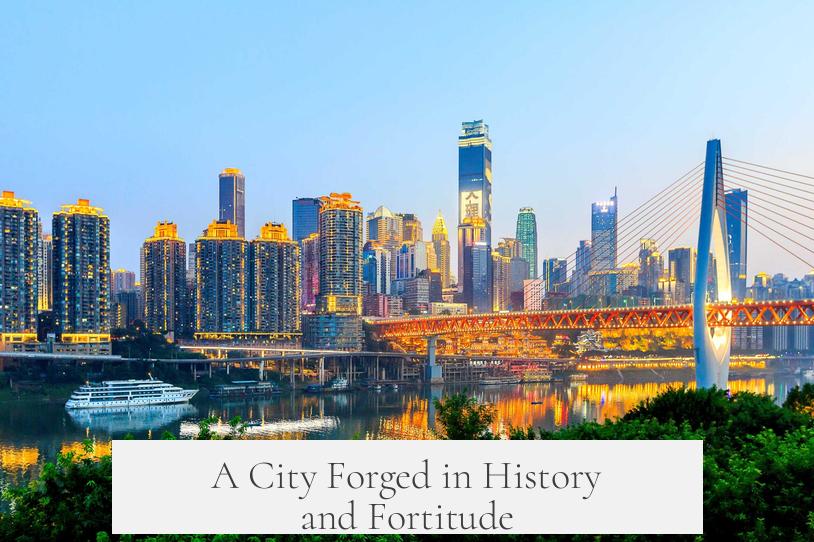
Chongqing’s story isn’t just rivers and roads though. It’s got layers of rich history that explain why it’s the city it is today. Back in the late Song Dynasty, the city was fortified to hold the line against Mongol invasions — imagine a medieval version of a security system that not only protected what mattered but also expanded the city’s boundaries. That set the stage for future growth.
Ever wonder why it’s called “Chongqing”? The name means “double happiness.” Funny enough, this wasn’t just a wishful phrase. Prince Zhao Dun became Prince of Gong, then Emperor Guangzong in 1184. This double promotion became the city’s namesake—a happy coincidence that stuck throughout centuries.
Population Upheavals and Administrative Power Plays
Here comes a twist: Chongqing’s population wasn’t always booming. Actually, during the Ming-Qing transition, this region saw a catastrophic drop—from 3 million to just 20,000 people! The culprits? War, famine, drought, and epidemics wiped out most of the populace.
But nature abhors a vacuum. Soon, migrants from regions like Huguang, Jiangxi, and Guizhou surged in, revitalizing Chongqing and nearby Chengdu. This influx was so significant that during the Qing Dynasty, when China was deciding on regional governance, Chongqing was chosen as the headquarters for the Viceroy of Huguang and Sichuan—beating out rivals like Wuhan and Chengdu. That’s political clout earned through survival and reinvention.
The Wartime Capital That Would Not Bow Down
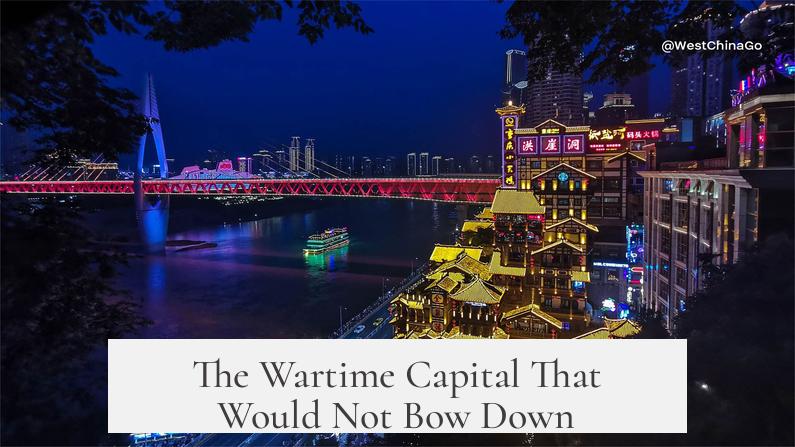
World War II turned Chongqing into a living, breathing fortress. After Nanjing fell, Chongqing became China’s wartime capital. Why? Because it was safe, shielded by surrounding mountains, yet still connected through transport networks.
People and machinery flowed in. Government officials, scientists, machinists, and refugees all flocked to the city. The population doubled from under one million in 1937 to nearly two million by 1945. This was growth under pressure—literally millions of lives uprooted but still building a city that could withstand a brutal war.
Industrial Boom and the “Third Front” Plan
Fast forward to 1964. The Bay of Tonkin Incident nudged China into preparing for conflict by relocating strategic industries inland, away from vulnerable coastal areas. Enter the Third Front Plan, which prioritized Chongqing for heavy industry relocation.
The city saw a massive influx of about 450,000 workers along with 60 large state-owned enterprises. We’re talking diverse industries: electrical power, electronics, and metal refining all rolled into one booming hub. This industrialization built a strong economic foundation that would support Chongqing’s expansion for decades.
The Chongqing Explosion: Population and Urbanization (1990-2015)
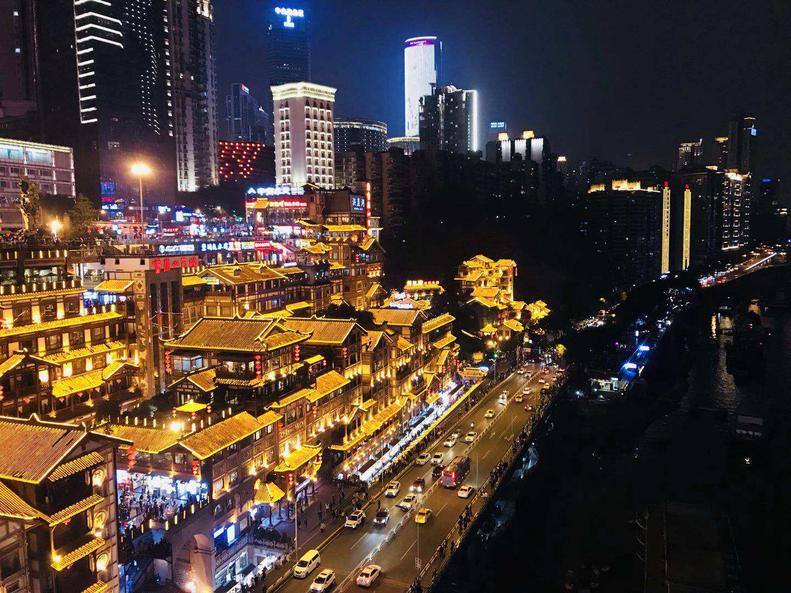
Here’s where things get really wild. From 1990 to 2015, Chongqing’s population shot up from 4 million to a staggering 14 million. This explosive growth mirrored China’s overall economic boom and race toward urbanization. In 1997, Chongqing earned municipal status, separating itself administratively and gaining more autonomy.
During Bo Xilai’s reign in the late 2000s, the controversial but impactful “Chongqing System” issued about 3 million rural-urban residential permits. Massive public housing projects popped up, transforming the city skyline into a wild jungle of skyscrapers and high-rises.
So, if you ever wonder why Chongqing feels like a city on steroids, now you know. It’s a living testament to human resilience, clever strategic positioning, and decades of political and economic moves that put it front and center in China’s story.
Why Does It Matter?
Why should you care about why Chongqing is so special? Because its story teaches us how geography and history shape a city’s destiny. It’s a lesson in adaptation—how a city rises through adversity, war, and population shifts to become an economic and cultural powerhouse.
Next time you hear about Chongqing, remember: it’s not just a dot on the map. It’s a place where dual meanings like “double happiness” aren’t just poetic but deeply tied to the spirit of a city that never stops growing and evolving.
Final Thoughts
- Chongqing is where natural geography meets strategic foresight. Its location on the Yangtze River turns it into a vital trade center.
- Historic fortifications and naming during the Song Dynasty reflect a long legacy of resilience and identity.
- Population shifts during the Ming-Qing transition highlight dynamic demographic changes that shaped its role in governance.
- Choosing Chongqing as the wartime capital underscores its security and connectivity advantages.
- Industrial upgrades under the Third Front Plan laid the groundwork for economic strength.
- Urbanization explosions and political innovations from 1990 to 2015 brought Chongqing into the megacity league.
What can other cities learn from Chongqing? Maybe that adversity is not a dead end but a detour to greatness. Chongqing is living proof that with strategic location, historical depth, and political will, a city can keep reinventing itself no matter the odds.
Why was Chongqing chosen as the wartime capital during WW2?
Chongqing’s strong transportation links and natural mountain protection made it ideal. It safeguarded government officials and industries as eastern cities fell to invasion.
How did Chongqing’s location influence its role in trade?
Situated on the Yangtze River near fertile lands, it served as a key port for Sichuan and Yunnan, connecting regional goods to central China via river and rail.
What led to Chongqing’s population growth from 1990 to 2015?
Rapid economic expansion and urbanization drove millions to move there. The city gained municipal status and initiatives like the Chongqing system spurred housing and migration.
How did the Third Front Plan affect Chongqing’s industry?
In 1964, heavy industry was relocated inland, making Chongqing a hub for state-owned enterprises in electronics, power, and metal refining, solidifying its economic base.
What is the origin of the name Chongqing?
It dates back to the Song Dynasty, when Prince Zhao Dun was doubly promoted, symbolizing “double happiness,” which is the meaning of Chongqing.
Why did Chongqing become the administrative center over Chengdu in Qing Dynasty?
After population recovery from turmoil, Chongqing’s growth and strategic position made it more suitable as the headquarters for the Viceroy of Huguang and Sichuan.

